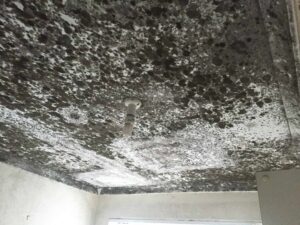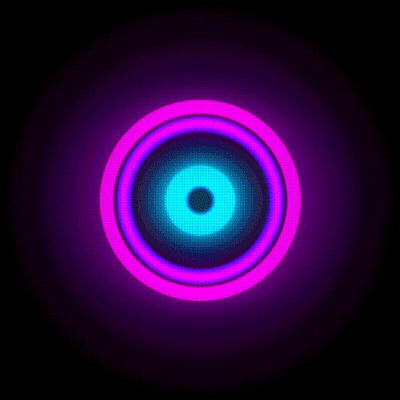Mold Removal Process Kirkland
Here’s a frightening thought that there are above one million different types of mold. Many of these molds are harmless, and you are probably breathing in and out multiple kinds of mold every day with no ill effects. Unfortunately, some of these molds exist in Kirkland are dangerous and can impact those with allergies and impaired immune systems, or even develop mycotoxins that can cause discomfort and longtermly ailments.
Types of Mold in Kirkland
If your house has one of these dangerous molds, you and your family may be breathing in these molds on a daily basis. We’ve realized a lot of different forms of mold in our occupation as mold assessment and remediation professionals, so we’ve recognized some of the most common molds in Kirkland to look out for in your home, along with their appearance, regions of your home to check for, and other relevant mold facts. Here these are;
- Alternaria
- Aspergillus
- Aureobasidium/s
- Cladosporium
- Chaetomium
- Penicillium
- Fusarium
- Stachybotrys
- Ulocladium
- Trichoderma

Alternaria
Olive green to brown in tint, with a velvety or hairy texture. Seems at damp places such as sinks, showers, toilets, bathtubs, or a water damaged portion of the home. It’s an allergenic type of mold. Alternaria is one of the most frequent molds found in Kirkland nevertheless, when Alternaria gets airborne, it may make its way into your house.
Aspergillus
It can occur in a variety of sorts, but most commonly in the green to black spectrum. It shows as flecks. Walls and wooden surfaces were discovered. It is toxic and allergenic type of mold because Aspergillus grows at an alarming rate, it is one of the most prevalent indoor molds. It’s prevalent in the air we breathe and our home air conditioning systems, and it contaminates fresh fruits, vegetables, and cereals quickly.
AureobasidiumIt’s creamy to pink at first appearance and turns brown to black with age. Found in wooden surfaces, behind wallpaper, painted surfaces. It’s allergenic in type. Aureobasidium is one of those hidden molds that can go unnoticed for years, as it has a petulance for growing behind wallpaper.
Cladosporium
Appears green to brown in color, with a suede like feel. It is allergenic. Cladosporium is a mold that thrives in both cold and warm conditions. Because of its suede-like texture, it effortlessly blends in with darker and broader working areas.
Cheatomium
Appears white to gray and then turns brown, cotton in texture and found in area of water damaged homes, leaky roof, basement, drywall and under carpet. It is allergenic & toxic. Chaetomium is easily recognized by its musty odor. If areas of your home were recently water damaged, be on the lookout for a continual stale smell.
Penicillium
Begins blue to green in appearance, silky in texture and shows on water damaged areas. It is allergenic in type. This mold, which we employ for many utilitarian purposes such as medicines and cheesemaking, can also have some detrimental health impacts when its allergic form makes its way into your house after flood, pipe burst or leakage.
Fusarium
It has a velvety to cottony feel and may be found on food and garbage bins, carpets, wallpaper, and interior. It is an allergic and poisonous mold. Fusarium is another mold that spreads swiftly. If you detect it in one section of your home, it’s probably growing in another.
Stachybotrys
Stachybotrys commonly known black mold is dark green to black in appearance. It commonly found on wet areas like bathrooms and basements and sometimes in hidden areas like behind walls, under ceilings and floor tiles. It is toxic type of mold. Since, Stachybotrys is not the only mold that appears black, many people blunder to understand it for a less dangerous mold.
Ulocladium
Appearance is brown to black in color, with a fluffy woolly texture. Bathrooms, basements, kitchens, and areas with high condensation levels loke window trim, bath or shower corners, etc. Ulocladium is allergenic and typically develops with other forms of mold, so if you find this mold, you may be dealing with many mold species.
Trichoderma
Trichoderma looks like white to green woolly patches. Damp and damp spots on wallpaper, carpet, and interior areas were discovered with it. Also, areas where condensation has accumulated. It’s an allergenic mold, some strains are toxic in nature. A Trichoderma mold infestation can be quite damaging to your building. Trichoderma carries an enzyme that degrades wood, causing rot and the ruin of construction materials.
Causes of Mold in Kirkland
- Water distrbance
- Water flowing in basements, walls and floor
- Drying apparels in premises lacking ventilation
- Non ventilation when bathing, showering and cooking
- Humidity
- Tumble dryers not expelled
- Furniture besides exterior walls
Mold Removal Procedure in Kirkland
Inspection
A qualified mold remediation and mold removal specialist must do a mold inspection to determine whether it is safe to remain in the property and to give you with a thorough strategy for dealing with the problem.
Reduction
In the afflicted area, a decontamination chamber is put up to ensure that the mold does not spread to other rooms in the property and that all of the mold is removed. Porous items that have been contaminated are packaged and disposed away. Non-porous materials are cleaned and decontaminated at our decontamination center.
Drying
We propose a drying procedure to prevent any additional mold growth. Because moisture is necessary for the spores to develop and become mold, any water damage or increase in humidity can be extremely harmful, as mold can sprout within 48 hours. Our specialized drying equipment will reduce humidity to prevent further mold growth. Mold spores are too tiny to see with the human eye, although they are always present in all properties. They land on surfaces and fly through the air. They can usually be eliminated by regular cleaning, but if they land on a moist surface, they can proliferate and grow, resulting in a mold problem in Kirkland.
Tips to Deal with Mold in Kirkland
Mold can have a variety of negative health impacts. In Kirkland mold can produce a stuffy nose, sore throat, coughing or wheezing, burning eyes, or skin rash in some people. People who have asthma or are sensitive to mold may experience severe responses. Mold infections in the lungs can occur in immunocompromised patients and those with chronic lung disease. In Kirkland mold is constantly present. It may enter your house via open doors, windows, vents, and heating and cooling systems.
Mold in the air may be carried inside on clothing, shoes, luggage, and even pets. In Kirkland mold grows where there is moisture, such as around roof, window, or pipe leaks, or after a flood. Mold develops on a variety of materials, including paper, cardboard, ceiling tiles, and wood. Mold may develop in dust, paints, wallpaper, insulation, drywall, carpet, cloth, and upholstery, among other things.
